Let’s call this article what it is: Finding the optimum length and rifling for you chosen AR cartridge
The AR-15 is about as proven a hunting rifle now as any; and still maintains the credibility built over the decades as a top tier defensive/tactical option as well as a sporting rifle for general use, including target shooting and plinking. Given the variability of the use cases for the AR platform, and the plethora of caliber/cartridge driven conversions and components that exist, it makes sense to understand how to optimize for each of a group of cartridges that can be used for multi-purpose crossovers.

This article is meant to provide a quick list and optimal barrel and twist configurations to help explore potential use cases, accuracy potential and component selection for those that want to build a capable rifle out of the AR with an upper receiver conversion bought from an online gun store.
Why rifling twist rate matters in general terms
In the infancy of the rifle, and firearms in general, the projectile was generally round (in the case of muskets and man-carried guns) and could have been all over the board for shape when fired out of large shotguns or mounted munitions.
For many years the original round format and the “throw anything at them” approach worked. But as firearms and ballistic technology took off, the science evolved to include a shape that could be stabilized in flight over longer ranges and take advantage of accuracy potential over raw firepower.
The development was rapid, even though the technology remained relatively primitive for decades. Eventually the oblong shape and optimized engineering gave us what we know now as modern projectile shapes. Today, it’s hard to find a long gun not capable of 3 MOA groups or better at a hundred yards.
Some of the newest innovations paired with incredible ballistic potential have produced confirmed kills in wartime of over 1.5 miles. Hunters all around the globe can routinely take ultra large game with a single shot at almost obscene distances. Shots at 1000 yards on trophy game are becoming somewhat more common.
In the field or on the range, optimization matters. When it comes to the AR-15 one of the largest sub-markets in the industry is centered around optimization of precision shooting tasks through a careful harmony of bullet engineering, powder efficiency and component parts for the rifle platform that shave fractions off of group sizes.
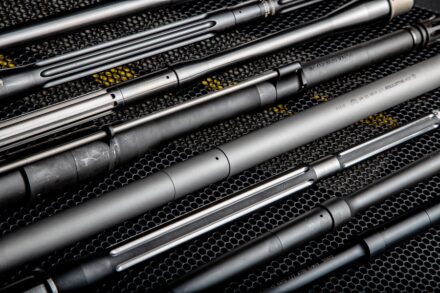
One of the most impactful areas of optimization outside of the ammunition component, is mating a proper barrel length and rifling twist rate to the cartridge, then to the specific bullet shape and grain weight, including slight variances in overall length.
These tiny optimizations can be the difference between a tiny 5 shot group that manifests as a single ragged hole, and multiple fliers on target. These tiny optimizations can be the difference between a trophy animal and a missed shot at 850+ yards. At the limits of these ballistic baselines, optimizations like barrel twist rates mean a lot.
The simplest form of twist rate optimization looks something this:
The larger/heavier and longer the projectile, the more stabilization can help before it exits the bore. The lighter grain weight or shorter the overall length of the projectile, the less stabilized it needs to be to fulfill theoretical maximum effective range performance.
These are basic concepts. You’ll see quite a bit more nuance as the concept is explored more in-depth through the rest of this article.
How barrel length factors into that equation?
Some projectiles only achieve their full velocity potential having been stabilized over the course of enough bullet rotations in the barrel, thanks to their heft, length and the amount of powder behind them. Therefore, many are optimized when shot out of a much longer barrel because they can achieve their desired velocity at muzzle exit.
Such is the case for longer, thinner bullets, generally. But as you know there are no hard and fast rules when it comes to optimization. Inevitably some rule will be broken by some outlying performer.
The 6.5 Creedmoor for example is great out of a longer barrel (say 26”). A .45-70 GOVT, for example (for comparative purposes) doesn’t achieve enough velocity to necessitate a longer barrel, and so it is generally shot out of a shorter one (say 16, 18 or 20 inches).

When a cartridge has such potential as the 6.5 Creedmoor does for accuracy, we tend to see manufacturers harnessing that potential through a strict set of hardware components or builds.
Alternatively, there has been a big push for barrels of 16/18/20” to be made for more accurate cartridges so that they can be fielded on ARs in military and sporting scenarios, without giving up much accuracy, even if they don’t need to have ultra long range potential.
In the case of the AR, this has given rise to the 6.8SPC and 6.5 Grendel, among others, such as the .300 HAM’r. You can get true 1MOA accuracy potential out past 350 yards and up to more than 550 yards in some cases without the need for an ultra-long, ultra-heavy barrel that would make the AR a front-heavy and unbalanced rifle.
Finding true optimization in the harmony between twist rate, barrel length, bullet length and grain weight
The full story isn’t laid out if you just talk about barrel twist rate and barrel length, though. There are many factors that play into the stabilization, and the ultimate terminal ballistic performance at the point of impact.
Some concepts that factor in:
• Wind impact (lighter weight bullets may shed wind well early on, but may not be able to cut the wind over longer distances)
• Bullet heft and makeup, including overall grain weight can impact drop and overall distance (you don’t recognize this issue in heavily powder driven cartridges like the .338 Lapua and the .50 BMG, because they start with so much more power at the breech – they also require much longer barrel lengths for optimization)
• Cartridge precision, including tight standard deviations in component measurements and weights and velocities
• Overall dimensions and profiles of projectiles can also impact drag, velocity, drop and other important factors
• Lack of powder efficiency can also introduce larger standard deviations which, when more extreme, can have detrimental effects on the flight of a projectile (the optimal load will have very small standard deviations in velocity throughout a box/case/production run)
So, you can see how handloading or factory precision loads can produce more optimized results because the ability to fine-tune and guarantee measurements and weights is more controllable. Additionally, finding the right bullet for the twist rate is important, but bullet engineering is also a factor: a boat tail hollow point is simply engineered to fly better than a flat base projectile.
Wind conditions can be harmful to extreme precision shooters – so optimizing for given conditions is important. Choosing the most bullet you can shoot, without going too far into the excessive grain weights can also produce a flatter trajectory less affected by drop – depending on shooter needs, of course.
Ultimately you can compensate to some extent by moving up a class in cartridges, though, that may not always be a realistic solution. You wouldn’t be hunting varmint, for instance with a .50 BMG or .338 Lapua. You may, however, utilize that .338 Lapua on a shot taking you two canyons over, for a trophy sheep on a rocky mountainside that requires perfect accuracy thanks to the small game outline.
Ultimately, some of the bigger cartridges may be out of the reach of mainstream hunters, which pushes forward the case for better overall optimization on mainstream cartridges too. This is the main purpose of this article.
The quick list so you don’t have to do the work of best barrel lengths and rifling rates for AR cartridges in the mainstream
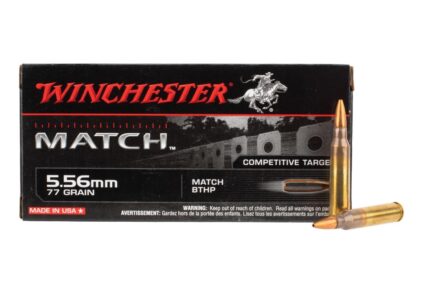
Here are some quick bullet points that lay out basic AR platform barrel lengths and twist rates (not all of these cartridges will be gone into below in-depth):
• 5.56×45 or .223 Remington 1:7” (55-85 grains); 1:8” (50-80 grains); 1:9” (45-70 grains): performance out of a 16/18/20” barrel are relatively small jumps per length interval. There is about a 15% decline in performance for some bullets in the 16” versus the 20” but that’s only at the extreme parameters of the cartridge.
• 6.5 Creedmoor 1:8” (all mainstream grain weights) out of a 26” barrel ideally, with nominal degradation in overall velocity at target and some bullet drop concerns out of a 24”, 22” and 20” with steps down for each interval. All lengths can still drive excellent accuracy, with range considerations being a foremost calculation to consider
• .308 Winchester or 7.62x51mm 1:10” (175+ grains); 1:11” (147-175 grains); 1:12” (110-147 grains) generally a 20” barrel is enough to stabilize the bullet without overtly substantial gains being made with up to a 24” barrel – though certain loads may benefit from the longer barrel depending on the specific loadout
• 6.5 Grendel 1:8” (all mainstream grain weights); generally, a 16/18/20” barrel will provide decent returns out to 450 yards, with the 20” barrel performing admirably for longer distances and being the optimal length for most tasks for the round which don’t require absolute range parameters
• 6.8SPC 1:11” (all grain weights) or 1:12” (all grain weights) for intermediate tasks out to 300-400 yards, the barrel length is going to be inconsequential with 16” and 18” barrels performing adequately with the 20” barrel being optimal when challenging against a military variant of the 7.62x51mm, or similar
Note that the 6.5 Creedmoor and the .308/7.62x51mm require the larger AR platform and will not fit on the standard AR component framework. This is also not an exhaustive list of the available cartridges for the AR rifles. Additionally, the .308 and 7.62 were included as an important relative comparison point. It is a proven round in the field on larger game and is widely available on the AR platform. The cartridge is not generally considered a small caliber cartridge, as is the focus of this article.
What’s hot in the marketplace and why you want to be looking at it?
The 6.5’s are hot. They utilize an inherently accurate bullet diameter, and while the 2 cartridges are significantly different and built to accomplish two different tasks, they share tack driving accuracy and longer than expected ranges in common.
The 6.5 Creedmoor is an accuracy hound. It’s built from the ground up for long range precision and has the powder and engineering behind it to accomplish the task it’s made to pursue. It requires much more case length to do the job, however. And therefore, it is relegated to the longer magwell and beefier components of the .308 pattern AR’s (AR10 and clones).
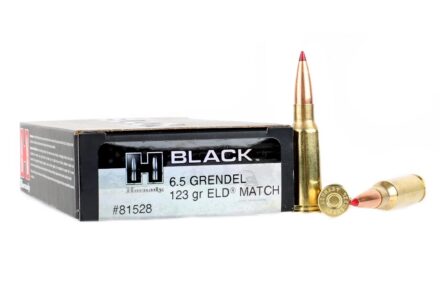
The 6.5 Grendel on the other hand was meant to be accurate, but it was also meant to be lower recoiling, work on the smaller AR platform that springs from the 5.56/.223 build and meant to harness accuracy out of a shorter barrel. It was also envisioned as an intermediate distance battlefield round and engineered for terminal ballistics over that intermediate range. It doesn’t perform as well over ultra-long distances as the Creedmoor.
For the purposes of field use in a hunting scenario, both are capable of taking a wide range of larger game at intermediate distances and beyond. A 6.5 Grendel will get out to 800+ and finds a sweet spot in the 450-550 yard range relative to peers. That’s a massive improvement over the smaller, less weighty offerings from the 5.56/.223, which is capable of dispatching deer sized big game and slightly larger (up to about 450lbs.) at ranges up to about 450 yards. Though, that would be at the real limits of the cartridge and assuming very good loads out of a well optimized firearm, and under ideal conditions, to be consistently taking animals that size, at that range.
The 5.56/.223Remington is generally best suited for game up to 350lbs. and at ranges up to 350 yards.
Nevertheless, it is a proven round in the hunting world and should not be discounted, as the mainstream hunters are generally covering a range of game that the cartridge is capable of dispatching cleanly under many different scenarios.
The best twist rates and barrel lengths for the .223 and 5.56
Disclaimer: the .223 Remington and the 5.56x45mm are not the same. But for the sake of rifling twist rates and barrel lengths they are essentially the same.
Here’s why you sometimes hear they are not interchangeable – and for safety’s sake and reliability they are not interchangeable. The difference is in the cartridge dimensions, not the bullet dimensions. The 5.56 is loaded to a much higher pressure specification, and there is a problem when combined with that pressure increase and the leade in the chamber area of a .223 Remington barrel, which can cause overpressure situations and lead to catastrophic events.
The basics: A .223 Remington can be fired in a 5.56x45mm marked barrel, but not the other way around. A .223 Wylde can shoot both cartridges. Generally, it is only safe to shoot cartridges out of barrels specifically marked for their use.
Because the projectiles are essentially the same or substantially similar for the two loads, you can utilize the same rifling twist rates.
For 62 grain bullets a 1 in 7 inch twist rate is nearly ideal. For lighter weight bullets, you can see some substantial variances, and the 55 grain bullet weights offer poor performance generally out of this twist rate beyond short ranges.
For the widest range of stabilization in the AR for the .223 and 5.56, the 1 in 8” twist rate can do it all. You won’t have perfect performance on some of the lower grain weights, but the performance variances are basically miniscule.
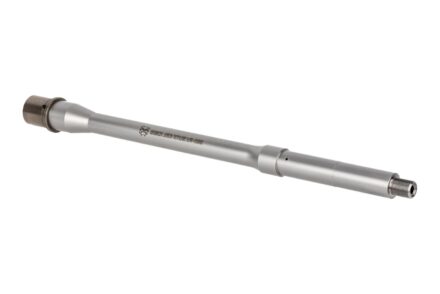
The 1 in 9” twist rate is also a versatile option being able to stabilize the 55 grain bullet weights and up to some of the heavier grain weights (e.g. 77 grains).
The biggest factor after finding a grain weight to match to the appropriate twist, is the cartridge precision and components/manufacturing. A great load out of the factory, or a well-tuned handload will offer substantial accuracy enhancing potential over longer ranges.
Optimizing for the 7.62×52 or .308 Winchester
The 7.62×51 NATO and the .308 Winchester are also not interchangeable in the strictest sense. But for the purposes of the barrel length twist rate and bullet dimensions they are.
Here’s why you don’t shoot a .308 Winchester in a 7.62x51mm chamber: The .308 Winchester is loaded to a higher specification on pressure than the 7.62x51mm cartridge. As stated before: generally, it is only safe to shoot cartridges out of barrels specifically marked for their use.
Generally, the engineering of the bullet for the 175 grain or larger .308’s allows for the 1:10 twice rate to be utilized with aplomb. The core bullet weights in the middle grain weights (about 147-175) can be used in a 1:11 inch rate barrel. Furthermore (although seemingly contradicting the statement made earlier in the article), the lighter bullet weights (110 up to about 147 grains) do pretty well out of the 1:12 barrel twist rate. This is partially due to the larger powder behind the projectile in the .308, with the overall shape of the bullet being more center heavy than spread over a large OAL (overall length of projectile).
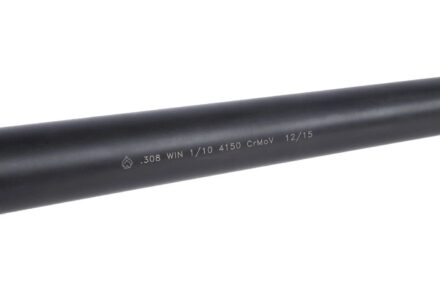
The rule of thumb still applies. You want to stabilize bullets based on length and weight generally, with the larger/longer ones being stabilized more than the shorter ones, if possible before they exit the barrel. Additionally, you will want to achieve factory and SAAMI velocity specifications if possible, right before exiting the bore.
The .308 Winchester has been eclipsed in some cases by the specialty rounds – for instance the 6.5 Creedmoor has better range potential and lethality on target at range in general terms. The 6.8 offers better lethality on intermediate targets and fits into the smaller AR-15 pattern. However, the .308 isn’t going anywhere – it is still one of the most versatile cartridges in the hunting and defensive use cases and there are guns and ammunition-a-plenty for the .308/7.62x51mm.
Additionally, what’s good for the specialty cartridges is also good for the .308/7.62 when it comes to powder innovation, bullet engineering, material development and general ballistic innovation. The rising tide lifts all boats so to speak – as ammo components get better so does all future ammo.
Optimizing for the 6.5 Creedmoor in the AR
One of the most popular additions to the world of AR’s has been the 6.5 Creedmoor. It’s the first time a dedicated cult brand has been so focused on accuracy and precision and decided to make a legitimate pairing for the AR platform. And it’s been a dream come true for those who prefer semi-auto sporting rifles but want real accuracy out to 600 yards+. In fact, it has true 1000+ yard potential – well beyond the normal parameters of the AR. Of course, getting to realistic consistency under all conditions at that distance would be a special endeavor, but optimizing for 800+ won’t be as difficult.
A barrel of 22-24” length in a 1:8 twist rate will get you there for the most part (a 26” barrel is ideal for full flight ballistics)
This is not a tiny carbine though. You don’t build a 6.5 Creedmoor on a pistol brace with a 10.5-inch barrel. The optimum barrel length for a 6.5 is right about 26 inches in a 1 in 8-inch twist rate. Most shooters settle for a 22-inch barrel because that gets you 90% of the way on optimization and load balancing and fine tuning can get you the rest of the way – also an already front end heavy AR is not particularly fun to shoot, even off of a tripod or sandbags. A 24” barrel will push you even further, but the returns are less noticeable. For anything you are trying to get to 1/2MOA you’re likely not going to try to fine tune on a receiver that can be taken down with two pins either, anyway.
Forget about bashing the AR on that front though – the utility far outweighs the monolithic stability bolt gun shooters are looking for, for 85% of all tasks anyway. And if you’re hunting or target shooting on anything but the longest ranges you won’t be surpassing 500 yards anyway. A properly configured 6.5 Creedmoor on an AR platform can get you to 500 yards at sub MOA all day long with the right mindset. That’s a pretty admirable achievement. There’s no hyperbole here, either. It’s not all that hard to plug and play sub MOA with the right tooling. And the right 6.5 Creedmoor upper conversion on an AR lower will easily do that.
The 18-20” barrels are no slouches, but they won’t cut the wind past a certain point – opt for the longer barrel you can find if you need to reach out past 450 yards
22- inch barrels abound on the market. A 22-inch barrel will stabilize a bullet past 450 yards and with fine tuning you aren’t losing much in the way of accuracy. The quality of life on an aluminum chassis and with a back-end light AR build is probably worth the 100 yards you’re skipping out on in the exchange. How many of you are shooting on a 1000 yard range often anyways, especially with an AR? Very few I’d bet. For those who love the 6.5 Creedmoor, and that’s pretty much anyone who has shot one, this is a fun way to amp up your favorite lower setup.
If you’re shooting on the standard ranges and love the 6.5 Creedmoor – an 18” barrel or a 20” barrel will work well. There is very little reason to get past that in barrel length if you don’t plan on shooting past 650-750 yards.
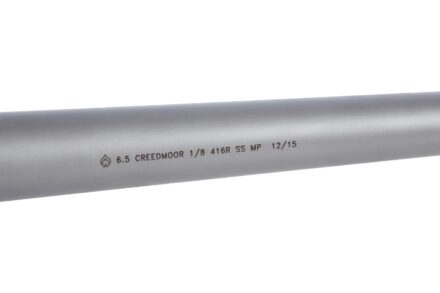
As a basic note you’ll be hard pressed to find a barrel in anything but the 1 in 8 inch twist rate. You wouldn’t want something else though – why mess with intermediate range perfection?
Some conclusions
Which cartridge you choose will be more dependent on your individual goals, or in the case of hunting – what your state regulations specify, or how much gun you need to bring for your chosen target.
First you should look to see what you are most likely going after, game wise; then optimize for terrain, expected range and general conditions of your favorite hunting grounds. After that, comes your reasonable expectations on what else you might use the gun for. Then you can decide on a general barrel length, twist rate and caliber and cartridge. Once you have that locked in – you can optimize through seeking out the ideal rounds for your chosen specialty AR.
The biggest gains will be made in the initial choice of barrel length and twist rate; and then further fine tuned and optimized through load selection.
Ultimately, we exist in a world where a military rifle is suitable all of a sudden for high precision shooting needs including taking trophy game at distances never envisioned by the engineers who worked on the AR as it was being birthed. With all these choices and all the potential brought to us by ballistic innovation and engineering for the platform, it’s a wonderful time to be an AR hunter.
Primary Focus is a weekly feature from Primary Arms that covers various firearms related subjects.


“As a basic note you’ll be hard pressed to find a barrel in anything but the 1 in 8 inch twist rate. You wouldn’t want something else though – why mess with intermediate range perfection?”
I built my 6.5creedmoor AR with a 1/7.5twist 22″ barrel with a +2 gas length.
Why 1/7.5 so I can run slightly heavier bullets.